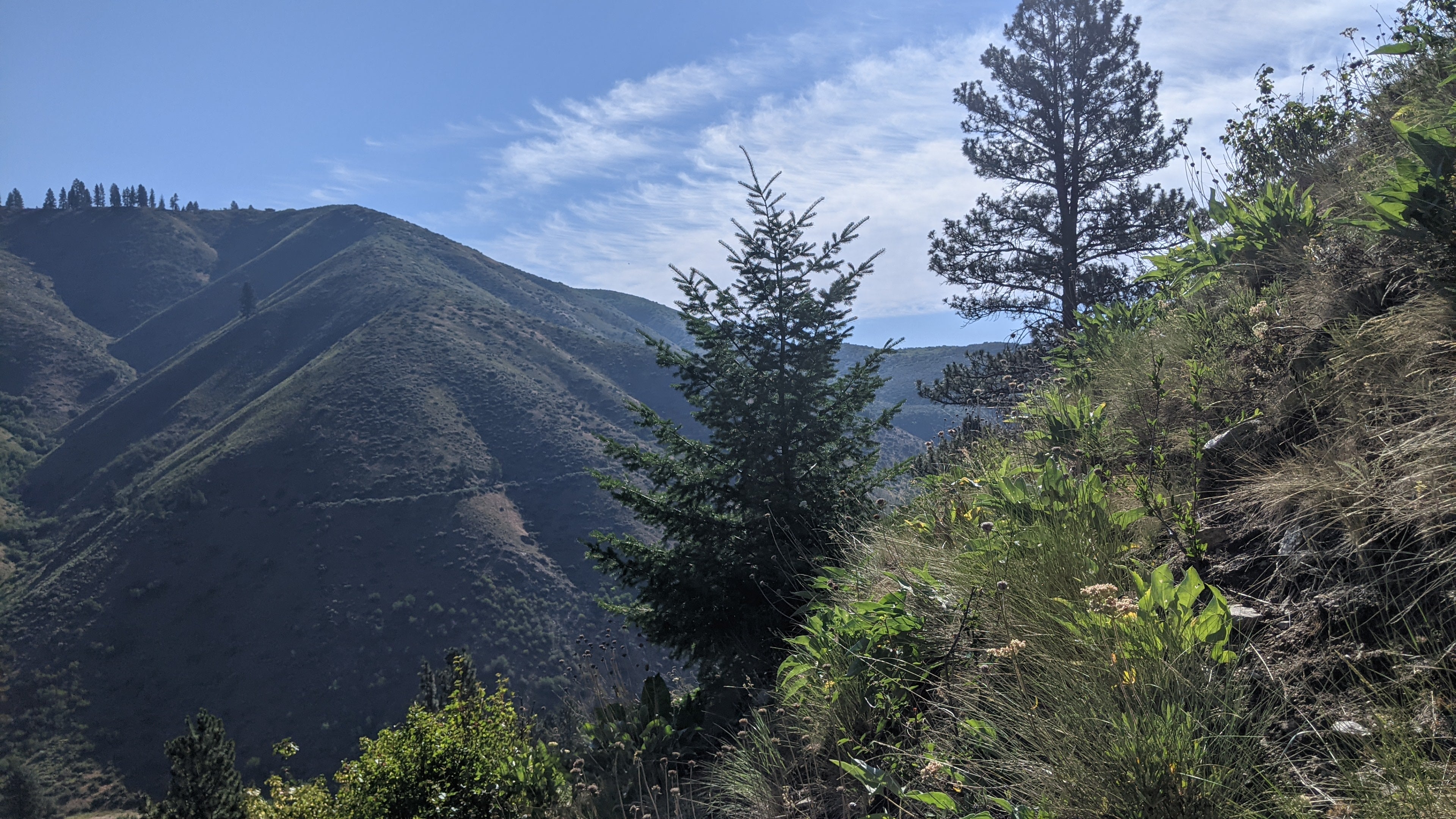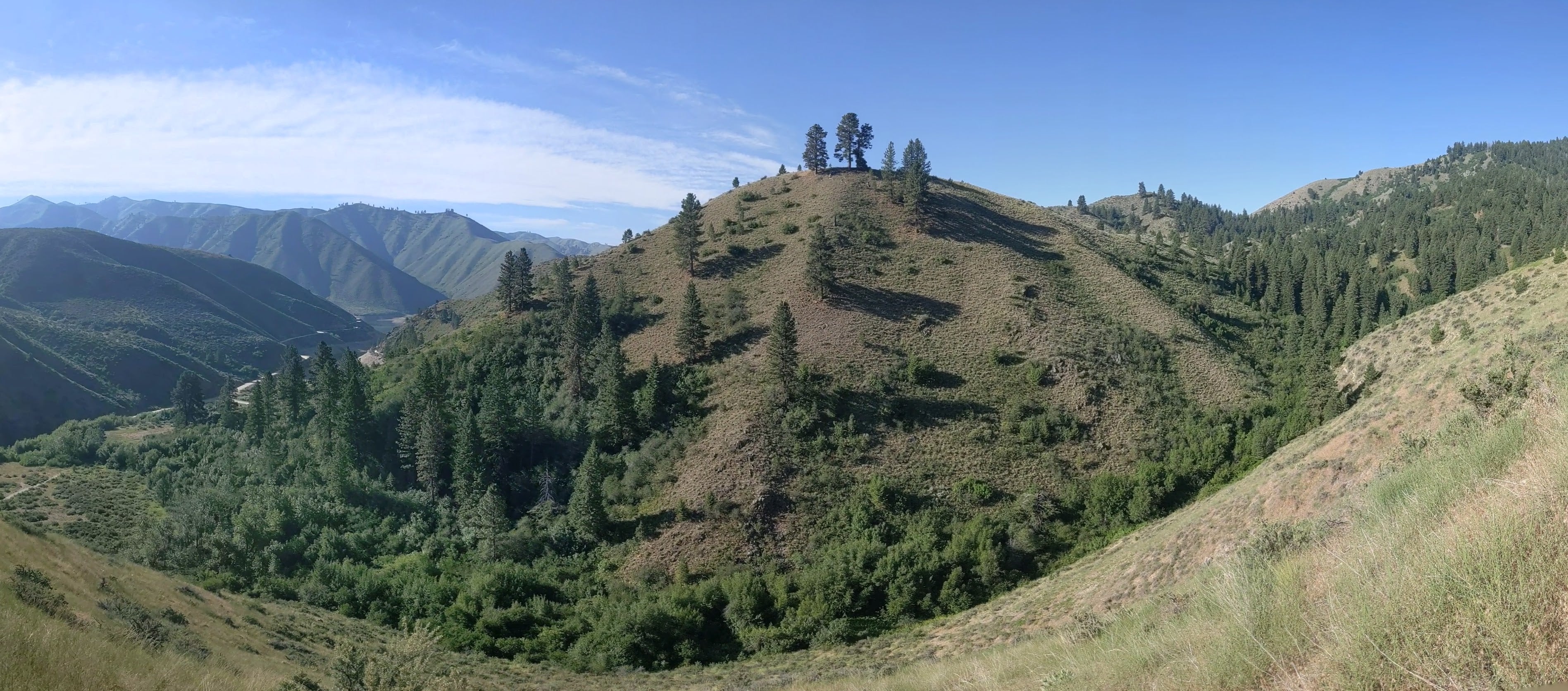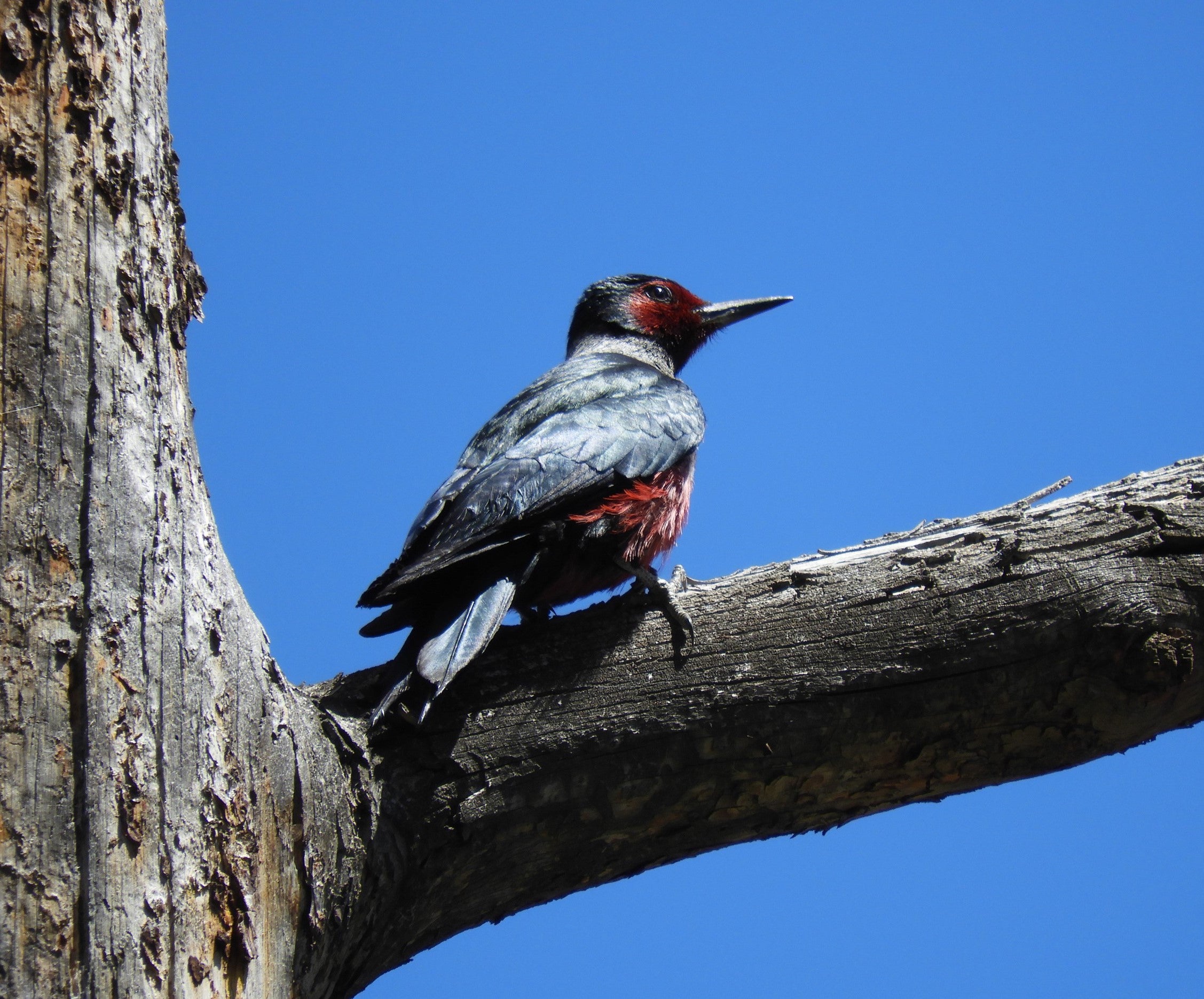By Jeremy Halka, IBO Research Biologist
Every summer we send roughly 20 technicians out into the wilds of Idaho, Montana, and Utah to conduct avian point-count surveys for the Integrated Monitoring in Bird Conservation Regions (IMBCR) project – a very large partnership with surveys all across the western US. As a coordinator, I tend to spend most of my time behind a computer screen (along with my indoor cat supervisor who watches my every move – thanks to the pandemic).

Each season I assign myself a handful of surveys close to home, but I like to include a couple of tough ones so I can maintain a level of empathy for our technicians who are out there doing some of the most grueling work imaginable.
The tough surveys also have a way of keeping us office-dwellers inspired by offering some of the best scenery and birds…and reminding us that we could probably do a little more to stay in shape!
This season one of my “tough” surveys is one that I’ve chosen for the past few years due to its proximity to Boise, and every time that I start up the first steep climb of the morning I question my sanity for doing so. This time was great for feeling like a full-time tech again as I was woken up multiple times by loud thunder and relentless rain pounding into the top of my truck’s bed cover. The rain always has a way of stopping right before you need to wake up in the dark, leaving the ground vegetation nice and wet for your boots to soak up while you still need to get out there and survey.
The first few points are along a creek where, even after having completed this survey multiple times in the past, I still had trouble making sense of the tangled concoction of shrubs as I recorded the vegetation data. But that overwhelming feeling and the pain of my cold feet and hands melted away almost instantly as I began the point-count and heard a Red-eyed Vireo singing along the creek. This species is fairly common in northern Idaho, but in southern Idaho they are harder to come by so it is exciting to find one.
Following the first few points along the creek is fairly straight-forward, however the rest are laid out across a mess of steep ridges and gulches, with no clear best route to complete the points.
No matter which way you slice it, you are going to be climbing and descending all morning.

On surveys like these I bring a trekking pole with me for extra stability because it is very easy to slip with how steep some spots can get. One point in particular on this survey, which happens to be right in the middle of the point grid, is located on a steep knob that is a big climb from every direction. I often think about skipping this point because it takes so much time to get to, and with the gnarly terrain it’s essentially impossible to complete all the points of the survey within the allotted time frame.
But I decided to make the climb, at some points almost crawling due to the steepness, because I knew a prize awaited me at the top: a small colony of Lewis’s Woodpeckers in a couple ponderosa pines (I’ve detected them in the past). What I refer to as the “glam-rock woodpecker”, the Lewis’s Woodpecker is a beautiful mix of dark green and watermelon pink that makes it one of the most unique birds of the West in my opinion. They also tend to be pretty charismatic, making them fun to watch.
It’s hard for me to have a bad day if I get to see a Lewis’s Woodpecker, so their presence on this survey alone makes all the hard effort totally worth it year after year.

It is often the small details and experiences like these that keep us going, and inspire us to continue our monitoring work year after year. After spending hours upon hours in our temperature-controlled environments, straining our eyes and brains while scrolling through mountains of data, it can be easy to start to lose sight of why we do it all. But remembering these moments can bring it all back into focus – it’s all about the birds and doing what we can to protect them for all generations to come.

For more information on the IMBCR program, visit the Bird Conservancy website.
And if you think you have what it takes to complete these IMBCR surveys, be sure to check our jobs page in January.
This article is part of our 2021 end of the year newsletter! View the full newsletter here, or click “older posts” below to read the next article.
Make sure you don’t miss out on IBO news! Sign up to get our email updates.